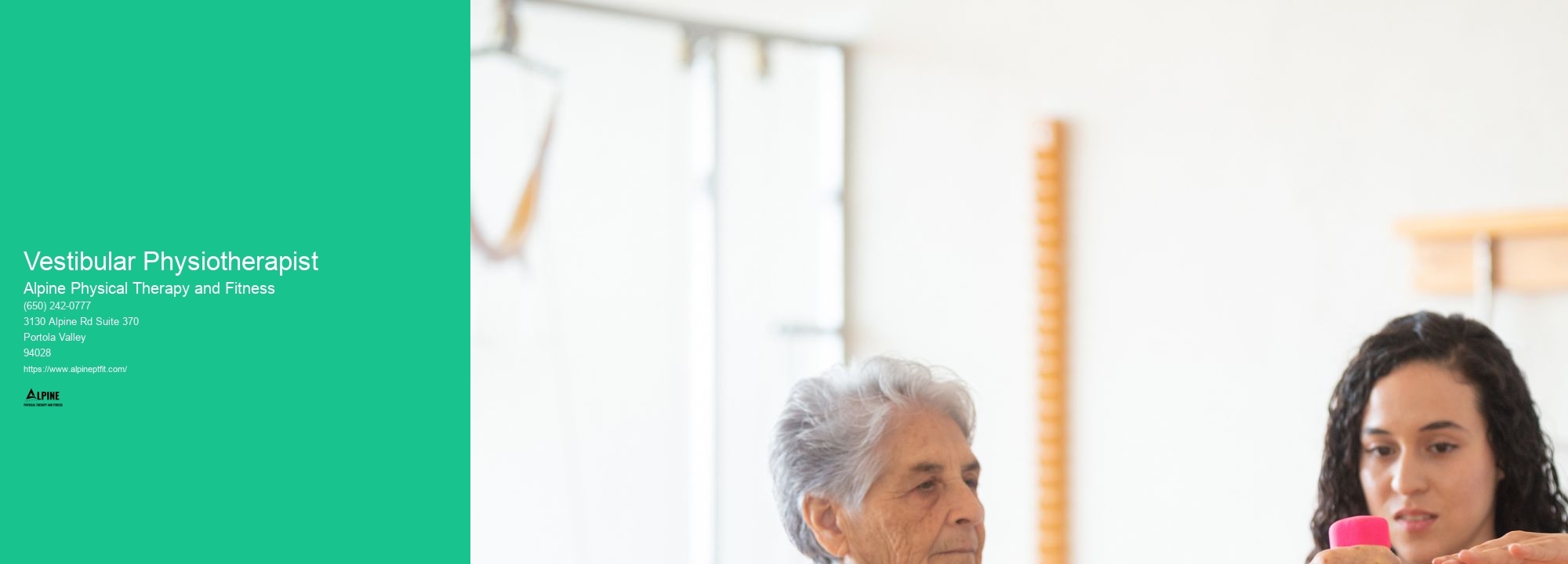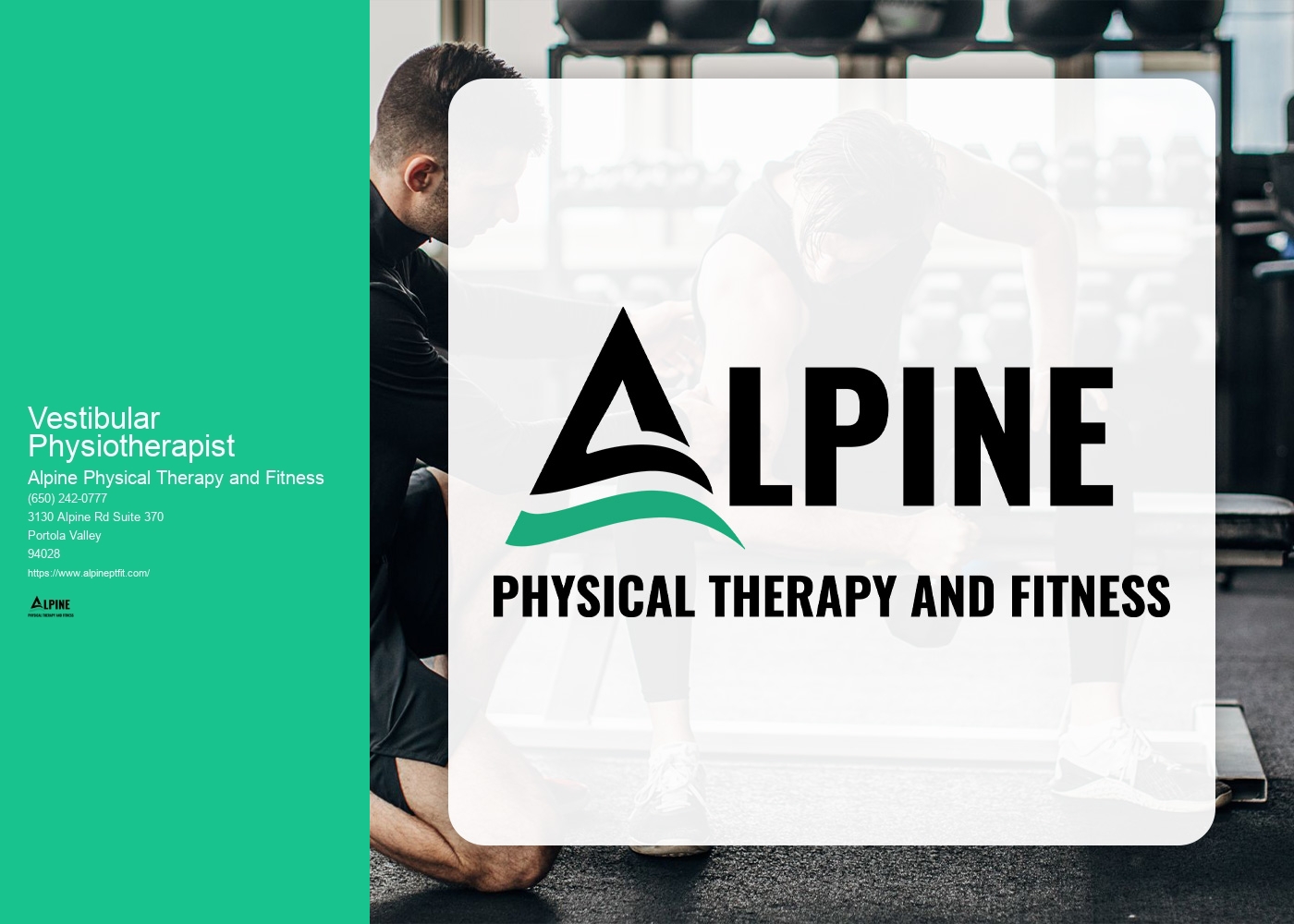

Vestibular physiotherapy, also known as vestibular rehabilitation therapy (VRT), is a specialized branch of physiotherapy that focuses on treating disorders of the vestibular system, which is responsible for maintaining balance and spatial orientation. Unlike regular physiotherapy, which addresses a wide range of musculoskeletal conditions, vestibular physiotherapy specifically targets issues related to the inner ear and the brain's ability to process sensory information. It involves a combination of exercises and techniques designed to improve balance, reduce dizziness, and alleviate symptoms associated with vestibular disorders.
Common symptoms that can be treated with vestibular physiotherapy include vertigo, dizziness, imbalance, unsteadiness, and problems with coordination and spatial awareness. These symptoms are often caused by conditions such as benign paroxysmal positional vertigo (BPPV), labyrinthitis, vestibular neuritis, and Meniere's disease. Vestibular physiotherapy aims to address the underlying causes of these symptoms by retraining the brain to adapt and compensate for any dysfunction in the vestibular system.
The duration of vestibular physiotherapy varies depending on the individual and the severity of their condition. Some patients may experience improvement within a few weeks, while others may require several months of treatment. The frequency and duration of therapy sessions will be determined by the physiotherapist based on the patient's specific needs. It is important to note that consistency and adherence to the prescribed exercises and techniques are crucial for achieving optimal results.

Yes, vestibular physiotherapy can be highly effective in managing vertigo and dizziness. The exercises and techniques used in vestibular physiotherapy are designed to improve the function of the vestibular system, which plays a key role in maintaining balance and preventing dizziness. By targeting the underlying causes of vertigo and dizziness, such as BPPV or vestibular hypofunction, vestibular physiotherapy can help reduce the frequency and severity of these symptoms, leading to improved quality of life for patients.
In addition to the exercises and techniques performed during in-person therapy sessions, there are several exercises and techniques that can be done at home to complement vestibular physiotherapy. These may include gaze stabilization exercises, balance exercises, and habituation exercises. Gaze stabilization exercises involve focusing on a stationary object while moving the head, which helps improve the brain's ability to process visual information during movement. Balance exercises may include standing on one leg or walking on uneven surfaces to improve stability and coordination. Habituation exercises involve gradually exposing oneself to movements or positions that trigger dizziness, with the goal of reducing sensitivity over time. It is important to consult with a physiotherapist before attempting any exercises at home to ensure they are appropriate for your specific condition.

Vestibular physiotherapy is suitable for individuals of all age groups, from children to older adults. The exercises and techniques used can be tailored to meet the needs and abilities of each individual, regardless of their age. However, it is important to note that the treatment approach may vary depending on the age and specific condition of the patient. For example, children may require more interactive and play-based exercises, while older adults may need exercises that focus on fall prevention and improving overall strength and balance.
While vestibular physiotherapy is generally safe and well-tolerated, there are some potential side effects and risks associated with the treatment. These may include temporary increase in dizziness or vertigo during the initial stages of therapy, muscle soreness or fatigue from performing exercises, and the possibility of exacerbating symptoms if exercises are not performed correctly. It is important to work closely with a qualified physiotherapist who specializes in vestibular rehabilitation to ensure proper technique and to monitor progress throughout the treatment process.

Physical therapy can play a crucial role in managing scoliosis by providing targeted exercises and interventions that aim to improve posture, strengthen muscles, and increase flexibility. Through a comprehensive evaluation, a physical therapist can develop a personalized treatment plan that may include exercises to correct imbalances, stretches to improve range of motion, and manual therapy techniques to alleviate pain and discomfort. Additionally, physical therapy can educate individuals with scoliosis on proper body mechanics and ergonomics to prevent further progression of the condition. By addressing the specific needs of each individual, physical therapy can help improve functional abilities, reduce pain, and enhance overall quality of life for those with scoliosis.
There are several targeted exercises that can be beneficial for improving fine motor skills in children with autism. These exercises focus on developing hand-eye coordination, finger dexterity, and overall control of small movements. Some examples include using playdough or clay to mold shapes and objects, practicing cutting with scissors to enhance precision and control, engaging in activities that involve picking up small objects with tweezers or tongs, and using puzzles or building blocks to promote manipulation and manipulation skills. Additionally, activities such as drawing, coloring, and writing can also help improve fine motor skills in children with autism. It is important to tailor these exercises to the individual needs and abilities of each child, and to provide a supportive and encouraging environment to foster their progress.
Aquatic therapy offers numerous benefits for individuals with spinal cord injuries. The buoyancy of water reduces the impact on the joints and spine, allowing for increased mobility and range of motion. The resistance provided by the water helps to strengthen muscles and improve overall strength and endurance. Additionally, the hydrostatic pressure of the water can help to reduce swelling and improve circulation. Aquatic therapy also provides a safe and supportive environment for individuals with spinal cord injuries to work on balance, coordination, and functional activities. The calming and relaxing nature of water can also help to reduce pain and promote a sense of well-being. Overall, aquatic therapy is a highly effective and enjoyable form of rehabilitation for individuals with spinal cord injuries.
Physical therapy plays a crucial role in addressing balance issues in older adults. Through a comprehensive assessment, physical therapists identify the underlying causes of balance problems, such as muscle weakness, joint stiffness, or impaired proprioception. They then develop personalized treatment plans that incorporate a range of exercises and interventions to improve balance and stability. These may include strength training exercises to target specific muscle groups, balance training exercises to enhance proprioception and coordination, and gait training to improve walking patterns. Additionally, physical therapists may utilize assistive devices, such as canes or walkers, to provide support and enhance safety during mobility. By addressing the root causes of balance issues and implementing targeted interventions, physical therapy helps older adults regain their balance, reduce the risk of falls, and improve their overall quality of life.